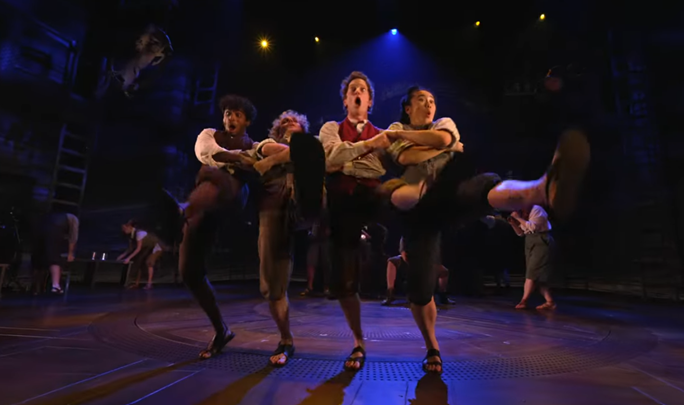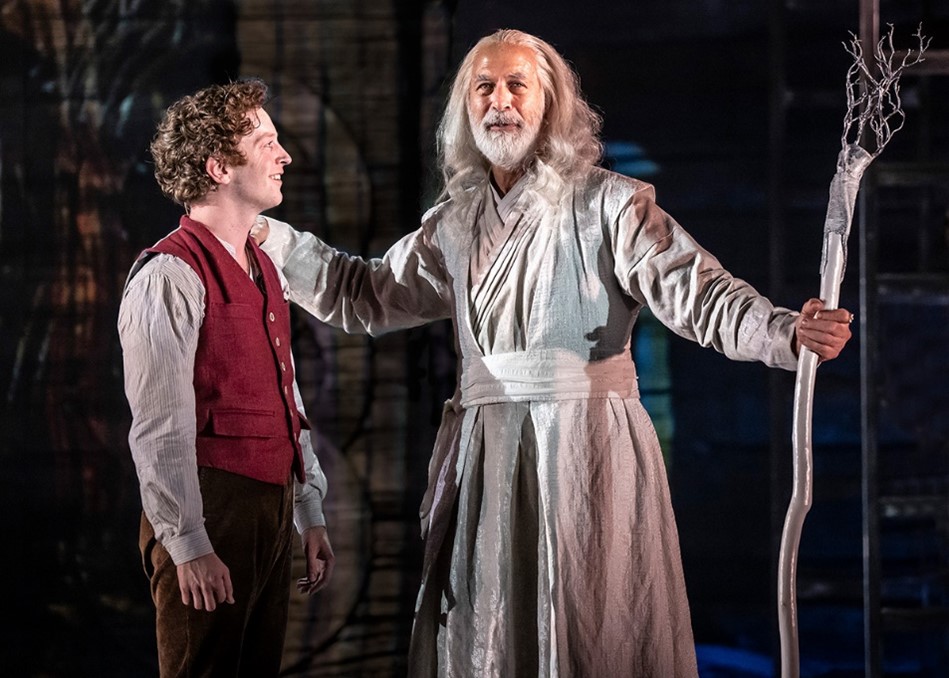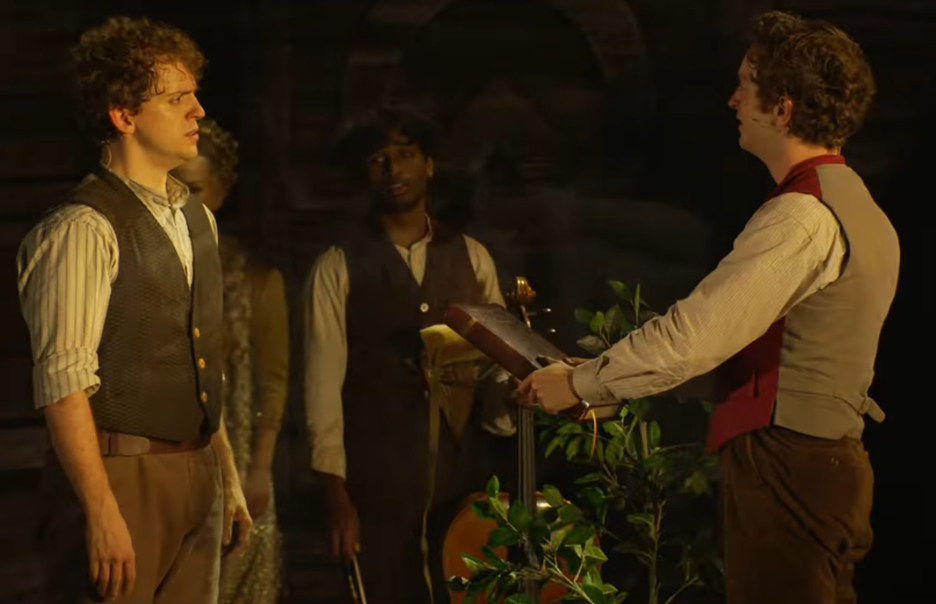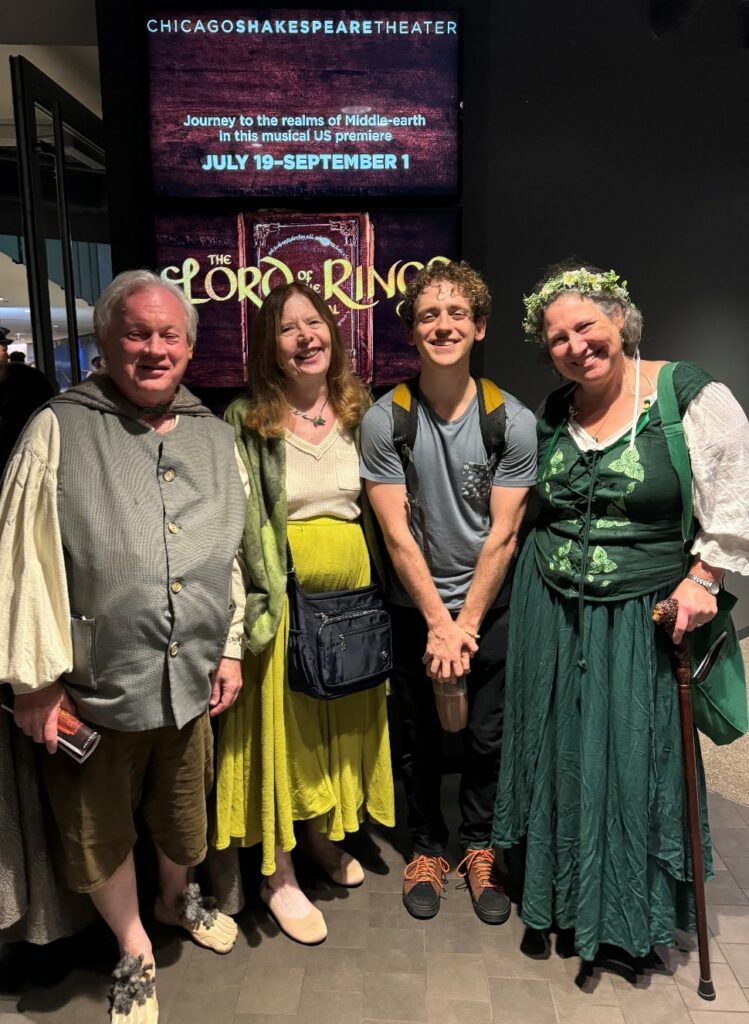Regular readers will know that The Lord of the Rings: A Musical Tale has been playing at the Chicago Shakespeare Theatre (quick, catch it before it closes on Sept 1!); and will then head down under, first to New Zealand and then to Australia. Staffer Madeye Gamgee went to see the show in Chicago, and was fortunate to have an opening preview conversation with Producer Kevin Wallace.
“This is all about the Hobbits telling their story.”

This Gandalfian counsel from The Lord of the Rings: A Musical Tale producer Kevin Wallace provides an essential lens for anyone engaging in the magic that sweeps across the Chicago stage in this re-imagined production of the epic Tolkien classic. Just as Tolkien himself discovered upon penning, “In a hole in the ground there lived a hobbit,” so too this musical seeks to transform the epic into the intimate, connecting us to joyfully humble hobbit roots through memorable songs, sparkling dance, and music from the performers themselves. “It’s a retelling of their story,” per Wallace; appropriately so given Frodo’s entrusting of the Red Book of Westmarch to Sam and his progeny. The songs go ever on and on.
Originally conceived “as a great piece of commercial art” in its mithril-financed, three-act/3.5 hour initial form for Toronto (2006) and London’s West End (2007-8), ‘The Lord of the Rings Musical’ has seen a renaissance at a much more hobbit-like scale. Now billed more simply as A Musical Tale, the 2023 revival at the Watermill Theatre in Newbury (UK) dropped an entire act, reduced the number of actors by more than 40, and compressed the run time by nearly an hour. (You can find staffer greendragon’s review of that production here.) “Compared to the earlier productions, this is ‘rough’ theater,” Wallace explained. “It’s hobbits telling their story with what’s available to them… It’s actually ‘big’ theater with the illusion of being ‘poor’. You’re allowed to see how we’re doing it.” Which is why Pippin goes to war carrying a cello, a feat which comes off surprisingly well, to the consternation of a few marauding orcs; and we’re talking some serious swordsmanship by the double bass player.
Two and three quarter hours to cover the whole book? Really?

The PJ extended edition movies combined run for over 12 hours of content, and listening to the unabridged audiobooks will take you at least 54 hours at regular speed. So how is it possible to pack all of this theatrical Third Age goodness into the flight time between New York and Chicago (and still in time to wrap up before all the local restaurants close)? Kevin Wallace is very familiar with the challenge: “Given the films, we must satisfy our audience’s primary expectations.” Appearances by a very shadowy and flame-flowing Balrog, a stage-filling Shelob, and an especially spot-on and athletic homage to Andy Serkis’ Gollum (by actor Tony Bozzuto) certainly fed these appetites. “The essence of the story, though, is Sam’s and Frodo’s journey. Side sections have to fall away…” So the lands of Gondor and Rohan become “the Lands of Men”, Théoden and Denethor combine to become simply the “Steward of Gondor”, and we lose storylines and characters that many find dear. All you lovers of beacon-lighting, Paths of the Dead/Dead Marshes, and “I am no man” heroics may need a post-play re-watching, particularly of the second two movies, to scratch those particular itches. But even though there’s still no Bombadil, if you’ve ever wondered what John Lithgow’s version of Treebeard would sound like, this is the production for you.
Still, this is no mere cryptic condensation – despite what some less flattering critics have dwelled on since the inaugural performances in London and Toronto. This production certainly rewards any who are already familiar with the LotR story and personalities, whether through the book and/or movies: character connections are easier, e.g., between Merry and Pippin or Frodo and Gandalf; and plot compression leaves room for personal appreciation of excluded side quests and lost details. I found that the musical’s condensed frame actually served to intensify how I experienced some core Tolkien themes: the blending of voices, musical languages, and cultures in a functioning (and whirling) Fellowship; the enchantment and providential intricacy of dance as an element of creation and connection; the longing and reassurance of beauty observable in stellar spheres, sharply contrasted with the darkness that lingers here in Middle-earth (thank you, Kevin, for continuing to defend the inclusion of “The Star of Eärendil” on the song list!); and especially the hope and heartbreak of repentance, sometimes attained as with Boromir, and sometimes approached and then rejected, as with Gollum’s tragic tale. This was beautifully portrayed (far better than anything PJ produced) in Gollum’s self-aborted restoration to a more noble, never-ending story of worthy Hobbit heroes, as sung by Frodo and Sam in the poignant “Now and for Always” as they approach Mordor and Shelob’s snares. Gollum’s plaintive lyrical mimicry, and the mirroring choreography as he and Frodo together reach for some unseen saving grace, all leverage live theater powerfully in a demonstration of their shared addiction, and diverging paths, given the power of the One Ring. We even hear a faint note of self-sacrifice from Sméagol as he falls toward the Cracks of Doom, “Master is free…”
While condensed, this Musical Tale still manages to offer worthy, and unique, moments to integrate into the ways you may have experienced the artistic and thematic power of Tolkien’s story.
The Road Keeps Going Ever On

The Lord of the Rings: A Musical Tale continues to evolve. “Our Watermill production was a beautiful, intricate Swiss watch,” said Wallace. “Now, here in Chicago, we’ve built a more highly sophisticated Swiss clock.” Even with all the sets, puppetry, and props shipped in from last year’s UK production, the US premiere enjoys a larger venue than the Watermill, courtesy of the Chicago Shakespeare Theater’s innovative and flexible stage, The Yard. Director Paul Hart works wonders in leveraging this flexibility, from multilevel balconies built into the set, to Gollum’s gymnastic entrance from mid-audience to begin Act 2, to the lighting and mechanical magic that the set makes possible. The US cast and orchestration has also grown a bit from its Watermill roots, adding four new cast members/musicians (including that dangerous double bass). “It’s a production with Chicago ownership, reflecting the demographics and acting talent of the city,” added Wallace.
So where does the Road lead once the Chicago production wraps on September 1? The Civic Theater in Auckland has already scored a similar limited run as Chicago’s, with shows from the 5th though the 24th of November. And just announced is an Australia premiere, with performances beginning at the Sydney State Theater on January 7, 2025. And whither then? Well, wait and see!
“This production is not only a phenomenal opportunity, but also a huge responsibility. You just don’t want to take it for granted… In time, others will take the words and the music and ask, ‘How will I tell that story?’ But we’re still in our infancy with this one.” Suffice it to say that Kevin Wallace has dreams. Big dreams. Take some jewelry to Mordor big, unsurprisingly.
The Lord of the Rings: A Musical Tale continues through September 1 at the Chicago Shakespeare Theater. You can find tickets on their website, here.



